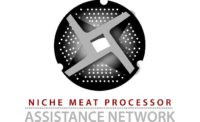This video is brought to you by FPEC and Ossid.
Butterball’s senior director of safety and risk management Brian Rodgers talks about the learning curve of adjusting worker safety to the different equipment you encounter with pork processing versus turkey processing and how that was advantageous in the long run.
Andy Hanacek: Talk about the learning curve you had to undertake, because it’s pork processing.
Brian Rodgers: That’s a good question. That was a type of meat that we’ve never dealt with before. The differences come in the type of equipment that is used to process that meat. It has caused us to look at different types of process and different types of equipment than we had ever looked at before. You’re going to have some equipment that is very similar, but there are some pieces of equipment that are completely foreign or were completely foreign to us on the poultry side that we just never had that experience with. That was a change for us. It actually has been quite beneficial for us, because it allowed us as safety professionals to look at things a little bit differently. Frankly, we’ve applied some of our learnings on the poultry side and have applied them to the pork side, and vice versa. One of the things, Andy, that has been most beneficial is that Butterball today, and it has for many, many years, we really try to look at the risk and engineer that risk away. Rather than throw more bodies at the problem, we really try hard to engineer that hazard or risk away through automation, through different types of equipment that can be used. As we move forward, you are going to see Butterball and other similar types of companies really moving aggressively forward in that front.
Hanacek: And that’s regardless of poultry or pork?
Rodgers: If the automation is there, it almost always beneficial to the associate’s safety. As an example, at our Mount Olive, N.C. facility, last year we put in a gas-stun piece of equipment. We talked about DPMO, defects per million of operations… that one change allowed us to eliminate around 14 to 15 million opportunities for employee injury per year. Now that was a big change. It’s not just swapping out a piece of equipment. It was a large process change, which was very capital intensive, but that methodology of moving toward a more automated model really allowed us to gain efficiencies in productivity. From the safety side, we eliminated over 14 million opportunities for injury every year, so that’s where we are headed. In the next five years, that’s where you are going to see companies like Butterball move much more aggressively toward.
Next: Part 3 on Butterball’s milestone achievements
Previously: Part 1 on the challenge of merging company cultures when it comes to worker safety
Be sure to check out our other Q&A interviews with Butterball executives.





